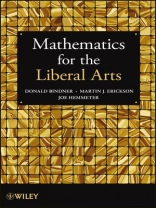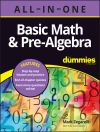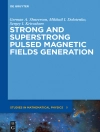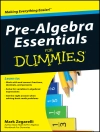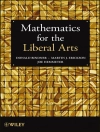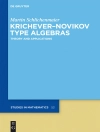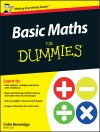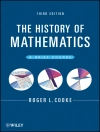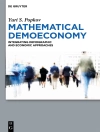Presents a clear bridge between mathematics and the liberal arts
Mathematics for the Liberal Arts provides a comprehensible and precise introduction to modern mathematics intertwined with the history of mathematical discoveries. The book discusses mathematical ideas in the context of the unfolding story of human thought and highlights the application of mathematics in everyday life.
Divided into two parts, Mathematics for the Liberal Arts first traces the history of mathematics from the ancient world to the Middle Ages, then moves on to the Renaissance and finishes with the development of modern mathematics. In the second part, the book explores major topics of calculus and number theory, including problem-solving techniques and real-world applications. This book emphasizes learning through doing, presents a practical approach, and features:
* A detailed explanation of why mathematical principles are true and how the mathematical processes work
* Numerous figures and diagrams as well as hundreds of worked examples and exercises, aiding readers to further visualize the presented concepts
* Various real-world practical applications of mathematics, including error-correcting codes and the space shuttle program
* Vignette biographies of renowned mathematicians
* Appendices with solutions to selected exercises and suggestions for further reading
Mathematics for the Liberal Arts is an excellent introduction to the history and concepts of mathematics for undergraduate liberal arts students and readers in non-scientific fields wishing to gain a better understanding of mathematics and mathematical problem-solving skills.
İçerik tablosu
Preface xi
PART I MATHEMATICS IN HISTORY
1 The Ancient Roots of Mathematics 3
1.1 Introduction 3
1.2 Ancient Mesopotamia and Egypt 7
1.3 Early Greek Mathematics: The First Theorists 20
1.4 The Apex: Third Century Hellenistic Mathematics 42
1.5 The Slow Decline 58
2 The Growth of Mathematics to 1600 73
2.1 China 74
2.2 India 89
2.3 Islam 102
2.4 European Mathematics Awakens 120
3 Modern Mathematics 139
3.1 The 17th Century: Scientific Revolution 140
3.2 The 18th Century: Consolidation 156
3.3 The 19th Century: Expansion 170
3.4 The 20th and 21st Centuries: Explosion 193
3.5 The Future 217
II TWO PILLARS OF MATHEMATICS
4 Calculus 221
4.1 What Is Calculus? 221
4.2 Average and Instantaneous Velocity 222
4.3 Tangent Line to a Curve 226
4.4 The Derivative 232
4.5 Formulas for Derivatives 235
4.6 The Product Rule and Quotient Rule 241
4.7 The Chain Rule 248
4.8 Slopes and Optimization 253
4.9 Applying Optimization Methods 259
4.10 Differential Notation and Estimates 266
4.11 Marginal Revenue, Cost, and Profit 270
4.12 Exponential Growth 276
4.13 Periodic Functions of Trigonometry 287
4.14 The Fundamental Theorem of Calculus 293
4.15 The Riemann Integral 297
4.16 Signed Areas and Other Integrals 301
4.17 Application: Rocket Science 306
4.18 Infinite Sums 311
4.19 Exponential Growth and Doubling Times 317
4.20 Beyond Calculus 321
5 Number Theory 323
5.1 What Is Number Theory? 323
5.2 Divisibility 324
5.3 Irrational Numbers 329
5.4 Greatest Common Divisors 331
5.5 Primes 336
5.6 Relatively Prime Integers 339
5.7 Mersenne and Fermat Primes 343
5.8 The Fundamental Theorem of Arithmetic 345
5.9 Diophantine Equations 350
5.10 Linear Diophantine Equations 354
5.11 Pythagorean Triples 358
5.12 An Introduction to Modular Arithmetic 361
5.13 Congruence 366
5.14 Arithmetic with Congruences 370
5.15 Division with Congruences; Finite Fields 374
5.16 Fermat’s Last Theorem 381
5.17 Unfinished Business 383
A Answers to Selected Exercises 385
B Suggested Reading 401
Index 405
Yazar hakkında
DONALD BINDNER, Ph D, is Assistant Professor in the
Department of Mathematics and Computer Science at Truman State
University.
MARTIN J. ERICKSON, Ph D, is Professor of Mathematics in
the Department of Computer Science at Truman State University and
the author or coauthor of numerous books on mathematical
topics.
JOE HEMMETER, Ph D, is a freelance software developer and
a past professor of mathematics at both the University of Delaware
and Truman State University.
